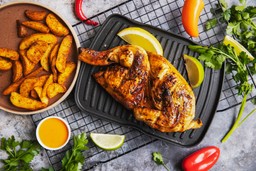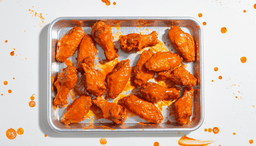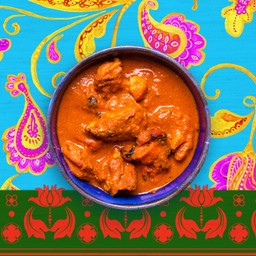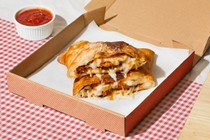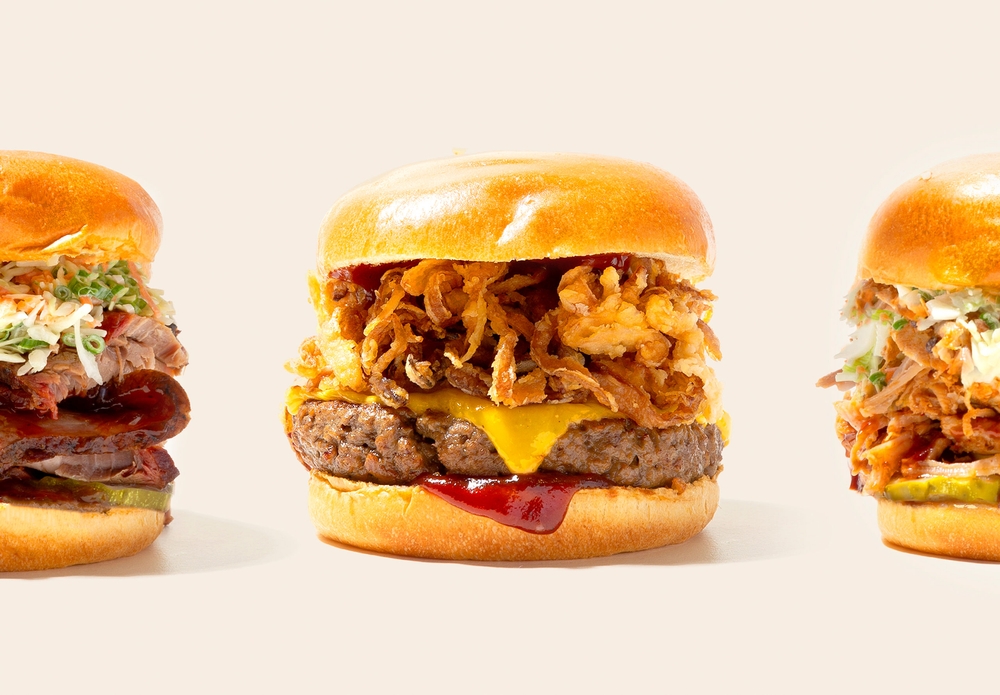Let’s talk Munch: a go-to takeaway spot in Manchester. The local restaurant offers every craving you could ask for in one menu from pizza, to kebabs, to fried chicken, burgers, and curries. We sat down with Munch’s General Manager, Salim, to learn more about his story, the pandemic’s impact on the business, and how they managed to revolutionize their model through Future Foods’ virtual brands.
“With our Future Foods brands, we can get orders all day as the brands are so diverse and cover everything.”
A family-run business
It all started 15 years ago, when Salim and his father, who had been working in the textile industry for over 30 years, decided to quit everything and launch a takeaway business together, with no prior restaurant experience. They kept an eye out for potential units they could rent in and around Ardwick in Manchester. Luckily for them, a new building was being developed from scratch at the time. They applied for the unit and the license, they set everything up in the empty space and that’s where their family project “Munch” was born!
Since its launch in 2008, Munch has become the go-to takeaway location in Ardwick and it’s easy to understand why. The restaurant serves a variety of delicious cuisines, including Donner Kebabs, Pizzas, Calzones, Burgers, Peri Peri Chicken and much more, all at very affordable prices. They are continuously innovating and adding new cuisines styles and dishes to their already extensive menu to accommodate eaters of all types and tastes.
The rise of online food delivery
Since the pandemic, delivery has grown at a staggering pace. According to a report conducted by CGA & Slerp Hospitality, the combined sales of deliveries and takeaways was 114% higher in April 2022 than in April 2019. Munch has also experienced a massive increase in delivery sales since COVID and the trend doesn’t seem to be going anywhere. “We used to do a lot more dine-in or takeaway sales. But I’d say ever since COVID, the sales have been 50/50, if not skewing more heavily towards delivery.”
Salim credits this shift in ordering habits to the younger generation adopting delivery as a true alternative to dine-in. “I think with the increasing student population around our restaurant, the delivery side of the game will continue to increase. So that’s why we’ve focused more on our online sales in recent years than dine-in or takeaway sales. We have noticed that the traditional way of doing business is slowly dying and that might be linked to the younger generation’s appetite for delivery.”
“Delivery sales with Future Foods have more than compensated for the decrease in dine-in consumers. Future Foods brands helped us maximise our time and brought in orders throughout the day, while before we would mostly only operate at night.”
With the delivery market getting more and more competitive, restaurants have been trying to find new innovative ways to generate more sales and reach new customers. Salim told us that before partnering with Future Foods he tried many different ways to distinguish his restaurant from others on delivery apps, including offering a different menu online to fit different needs.
This strategy got mixed results but the core idea was sound. Salim understood that there was a need to diversify his restaurant’s offering on delivery apps in order to gain the attention of more customers. This is why when Future Foods came along with fan-favourite brands that fit restaurants’ inventory, he jumped at the opportunity.
But what actually is a virtual brand?
Future Foods helped Munch reach new customers for each of the food categories that they cook through different virtual brands. Now at this point, you may be asking yourself: what on earth are virtual brands? Well, virtual brands are digital storefronts on delivery apps like Uber Eats, Just Eat and Deliveroo. The fact that they are entirely digital storefronts on delivery platforms is where the name comes from. Virtual brands are called “virtual” because the customer can only see and order from these storefronts online.
Future Foods crafts virtual brands based on eater data & trends. We provide restaurants like Munch with a fully-developed virtual brand that allows them to unlock another income stream. For instance, Munch currently offers a wide variety of cuisine types, including Calzones and Peri Peri Chicken. Through Future Foods, Munch has been able to sell more Calzones on delivery apps under the brand name Brooklyn Calzones, and more Peri Peri Chicken under the brand name Peri-fection.
Do you want to learn more about virtual brands? We’ve got you covered with a post all about what virtual brands are.
“Future Foods already has the delivery brands set up, you only need to choose the ones that fit with your restaurant and your inventory.”
Capitalising on the delivery trend with Future Foods’ virtual brands
Munch currently operates seven virtual brands, but that wasn’t always the case. “We started off with about three or four brands. Then we increased it because we do a large range of foods. We wanted to try new brands that fit our offering and see which ones worked. We went from four or five to ten or even twelve at our peak. And then we narrowed it back down to seven.”
Through Future Foods’ virtual brands Salim was not only able to capitalise on his existing menu and reach more customers, but he also had the opportunity to test out new concepts that he had always wanted to try. “We wanted to try Halal Chinese because we have the space and it was something that I’ve always had an interest in. It was a new experience for us, but it did really well and I’m very happy to have had the chance to test it out through Future Foods.”
The new virtual brands brought in an influx of new orders and customers during hours when Munch didn’t operate at full capacity. These orders also more than made up for the loss in dine-in customers after the COVID era. “Delivery sales with Future Foods have more than compensated for the decrease in dine-in consumers. Future Foods brands helped us maximise our time and brought in orders throughout the day, while before we would mostly only operate at night. With our Future Foods brands, we can get orders all day as the brands are so diverse and cover everything. We even trialled a dessert brand, which shows you the scope of what we can do.”
We asked Salim what advice he would give restaurant owners that are considering creating a virtual brand and here is what he had to say: “If your restaurant is already doing delivery, virtual brands are a natural add-on of what you do. They take away a lot of the pain of having to navigate delivery platforms. Future Foods already has the delivery brands set up, you only need to choose the ones that fit with your restaurant and your inventory. You can also try something new. We already did pizzas, but with Future Foods we got the opportunity to try calzones and it has been a massive success. If it doesn’t work out, then it’s not a big loss as you can pick another already-created brand and try something else instead of investing time and money coming up with a new concept yourself.”
So what do you have to lose? We’ll provide the brands, marketing, order aggregation & analytics to make sure that virtual brands mean a boost to your customer base and your bottom line. Above all, we know you make great food, so let us handle the rest!
